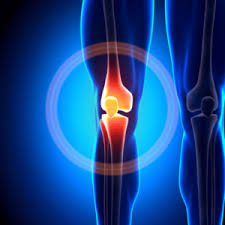Platelet-rich plasma (PRP) therapy offers an innovative way to help treat stubborn tendon injuries. By harnessing the body’s natural healing properties, PRP injections aid tissue repair without the risks frequently associated with surgical intervention or other invasive treatments. Whether you’re recovering from chronic overuse or an acute injury, understanding what happens post-injection can help you feel more in control of your recovery process.
How Does PRP Therapy Promote Healing?
PRP injections work at a cellular level by concentrating platelets from your blood, which are rich in growth factors. These growth factors are injected into the injury site to stimulate tissue repair, reduce inflammation, and enhance the recovery process for the damaged tendon. One of the benefits of PRP for tendon injuries is its personalized approach. The treatment comes directly from your body, so there’s no rejection or adverse reaction risk. It can also work harmoniously with other treatments, like physical therapy or bracing, to deliver better results.
What Should I Expect After PRP Injections?
It’s common to experience mild discomfort or soreness in the treated area following PRP injections. This is a natural response as the healing process begins, and the inflammation triggered by the injection is part of your body’s repair mechanism. Many patients describe sensations similar to those after a deep muscle strain or mild injury.
Swelling, redness, and stiffness in the area are also typical and usually subside within a few days to a week. Generally, ice packs help reduce swelling, while over-the-counter pain relievers like acetaminophen are safe options to address discomfort. It’s best to avoid anti-inflammatory medications such as ibuprofen, as these can interfere with the beneficial effects of the therapy.
What Is The Typically Recovery Timeline?
The recovery timeline for a tendon injury depends on the severity of the injury, your overall health, and how well your body heals. Initially, recovery begins as swelling and discomfort subside. Some lingering tenderness is common during this stage. After several weeks, light movement is often encouraged to promote tissue strengthening. Many people notice improved mobility and reduced pain during this time.
Significant pain relief is typically experienced within a few months. Physical therapy plays a key role in supporting recovery. Your recovery may differ depending on your circumstances. Maintaining open communication with your healthcare or PRP provider is key to help you stay on track and monitor your progress.
How Can I Support Recovery at Home?
Recovering from PRP therapy doesn’t end when you leave the clinic. Healing is an ongoing process that requires care and attention. Following the rehabilitation exercises or lifestyle adjustments your physician or therapist recommends helps support healing and achieve lasting results.
While gentle movement often aid recovery, overexertion during the early stages may hinder your progress. Pay close attention to your body’s signals, balancing activity with sufficient rest to promote healing. Regular follow-ups with your healthcare provider are equally beneficial. These check-ins allow for progress monitoring and allows treatment plan to be adjusted for optimal outcomes.
A Path Toward Healing
PRP is a safe, minimally invasive treatment that works with your body’s natural healing abilities, helping you recover faster and return to what you love. It uses your platelets to stimulate tissue regeneration and accelerate healing. Whether you’re dealing with an injury or chronic pain, PRP can provide effective, long-lasting relief.
- TimesHealthMag Fitness Workouts For Women – Burn Fat & Build Strength!
- Exploring the Essential Tools Behind Today’s Advanced Dental Procedures
- How To Choose the Right Gastroenterologist for Your Needs
- Exploring the Role of Stem Cell Injections in Regenerative Medicine
- Exercises to Relieve Elbow Pain and Improve Flexibility


Leave a Reply